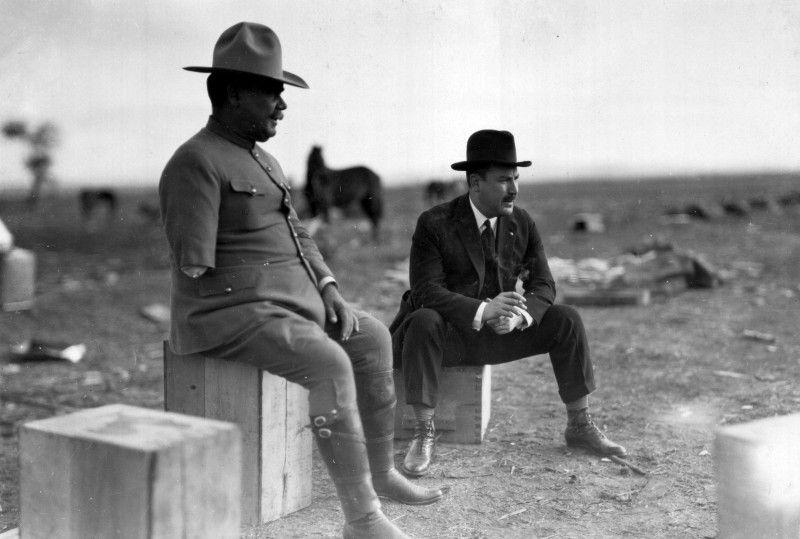Obregon defeats Zapata and Villa in battle. Carranza betrays the workers’ unions. The Morelos commune lives on, though its leaders fall one by one until Zapata himself. Villa too. And Obregon. And Carranza. We ask, what was it all for? And we give you the answers of some historians of the revolution: it was not in vain!
Tag: Mexico
The Ossington Circle Episode 6: Listening to Ayotzinapa with John Gibler and Manuel Rozental
I interview John Gibler, author of An Oral History of Infamy: The Attacks on the Students of Ayotzinapa, and Manuel Rozental of Pueblos en Camino. We discuss the disappearance of the 43 students in Mexico, the changes in Mexico over recent years, and the idea of “political listening”.
A massacre in the NAFTA zone
Written for Ricochet Media
A national day of action in protest against the disappearance and massacre of 43 education students in Mexico occurred on Wednesday, Oct. 8. The national teachers’ union made the call to protest, which was answered in 59 cities in Mexico and included a silent march organized by the Zapatistas in San Cristóbal de las Casas. Protests occurred all over the world, including Canada.
The college students from the Mexican community of Ayotzinapa in the state of Guerrero, 43 of whom were disappeared from a bus on Sept. 26, were studying to be teachers and protesting the starvation of the public system they were planning to work in. The bus was ambushed by police, probably on orders from officials in the nearby city of Iguala, Guerrero, from the director of Seguridad Publica (Public Security), Francisco Salgado Valladeres, and the mayor, José Luis Abarca. Both of these men are currently on the run. Six people were killed in the ambush, among them people on an unrelated bus, which was mistaken for a bus with student protesters and was actually carrying a soccer team.
An unknown number of bodies, 34 at last count, almost certainly belonging to these students, were unearthed in a mass grave in Iguala. The bodies had signs of torture and were probably burned alive.
Randal Archibold, writing in the New York Times, put forward the theory that the police were a part of a gang, or passed the kidnapped students on to a gang, which was strange because the students “were not known to have criminal ties.”
Canadian journalist and author Dawn Paley, currently studying in Mexico, writes, “The killers in Iguala were not drug gangs. They were cops and paramilitaries. Paramilitaries are non-state armed groups who work with state forces. There can be no clearer example of the horrors of state and paramilitary violence than what has happened to these students.” This massacre, Paley notes, is far from the only mass grave in Mexico. The New York Times report went so far as to say the country was “accustomed to mass killings.”
the key context for these killings is the use of state violence, up to mass murder, to manage social protest and to dismantle the public sphere
All of these issues are linked — drugs, crime, corruption and politics — but the key context for these killings is the use of state violence, up to mass murder, to manage social protest and to dismantle the public sphere. In this case, the attack focused on an embattled network of rural teacher education that has survived only through student mobilization, that seeks to serve Mexico’s rural population of 28 million, 20 million of whom live in extreme poverty.
The first escuelas normales were established in Mexico in the 1920s. They were a part of the country’s distant revolutionary history, where the goal was to bring public education to Mexico’s countryside and to create schools that would educate teachers and rural leaders among Mexico’s peasants. They were explicitly based on inculcating values of democracy and self-governance.
Historian Tanalis Padilla has described a pattern of violence against normalistas over many decades in La Jornada, concluding that “the lives of normalistas seem to have little value.”
The state and police certainly have acted that way. Unless people in Mexico and their friends outside, including here in Canada, prove them wrong, we can expect more Ayotzinapas.
Oaxaca!
I have been meaning to put together some resources and a little timeline on Oaxaca, mainly so that I could sort out what is happening for myself. In the meantime though, I would send you all to the NarcoNews, friends who have been doing great work for many many years.

